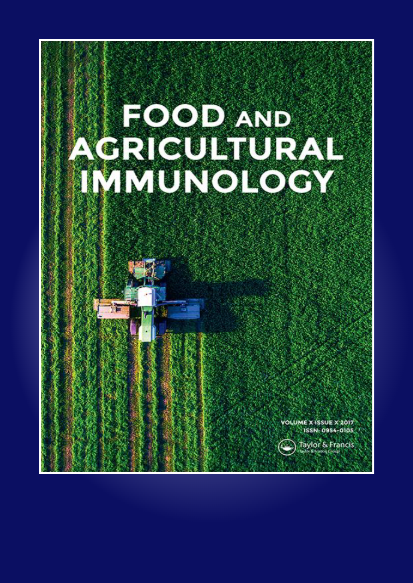小龙虾壳碳点作为荧光传感器选择性检测4-硝基苯酚
IF 2.1
3区 农林科学
Q3 CHEMISTRY, APPLIED
引用次数: 3
摘要
本文章由计算机程序翻译,如有差异,请以英文原文为准。
Crayfish shells-derived carbon dots as a fluorescence sensor for the selective detection of 4-nitrophenol
ABSTRACT As a type of environmentally deleterious compound, 4-nitrophenol (4-NP) has become a global concern due to its extreme toxicity to aquatic organisms and humans. Herein, we used naturally available crayfish shells as precursors to prepare a new type of carbon dots (CDs) by the hydrothermal method. The as-synthesized CDs exhibited strong blue fluorescence emission which can be sensitively quenched by 4-NP through the static quenching effect because of the formation of a ground state complex between CDs and 4-NP. Accordingly, a facile and rapid fluorescence sensor was developed to detect 4-NP from 0 μM to 50 μM with a limit of detection (LOD) of 0.16 μM. Furthermore, the proposed sensor was successfully applied for the detection of 4-NP in fresh crayfish meat and aquatic water samples.
求助全文
通过发布文献求助,成功后即可免费获取论文全文。
去求助
来源期刊

Food and Agricultural Immunology
农林科学-毒理学
CiteScore
5.30
自引率
6.70%
发文量
52
审稿时长
2 months
期刊介绍:
Food and Agricultural Immunology is an international open access journal publishing original immunological research with applications in food, agricultural, environmental and veterinary science. Submissions describing the use of immunological techniques and methods are particularly welcomed.
The journal aims to expand our understanding of the interactions at the interface of food and immune systems including studies on:
-Development of diagnostic systems – all types of ligand-based assays, e.g. antibody, aptamer
-Application of ligand-based assays for the detection or identification of molecules of interest in food science, agricultural research, veterinary investigations and clinical systems relating to food allergy or sensitivity to agricultural chemicals
-Effects of food on the immune system
-Studies on allergy and allergic reactions
-Investigations into food allergies
-Development of allergen-free food systems
-Development of novel assay formats
-Applications of assay systems to the monitoring of food items in relation to safety and labelling
-Food quality issues, e.g. speciation, adulteration and contamination
-Comparisons between different analytical techniques
The journal publishes research and review articles and is essential reading for food scientists, immunologists and all those concerned with the interaction between food and immune systems.
 求助内容:
求助内容: 应助结果提醒方式:
应助结果提醒方式:


